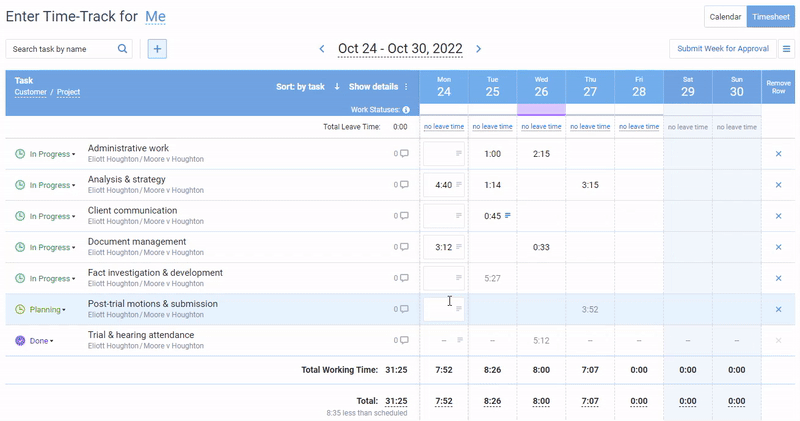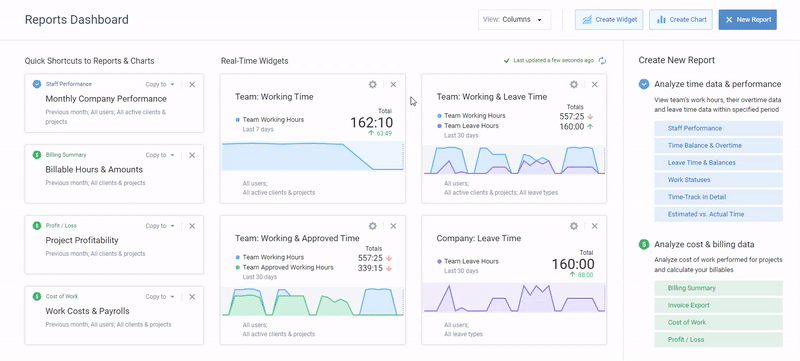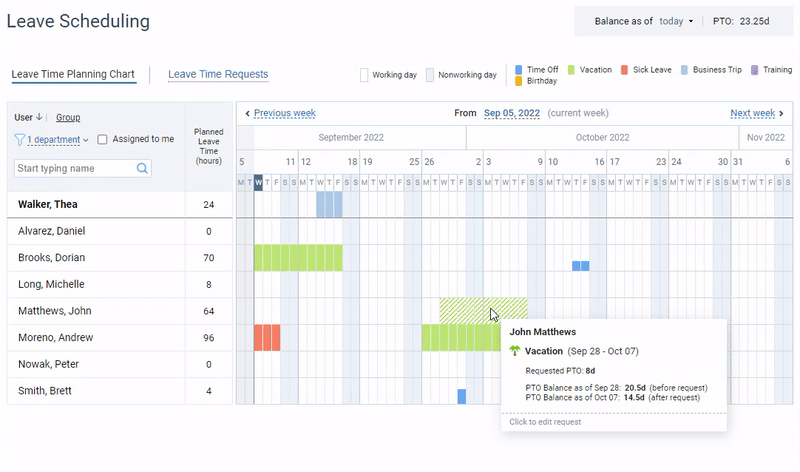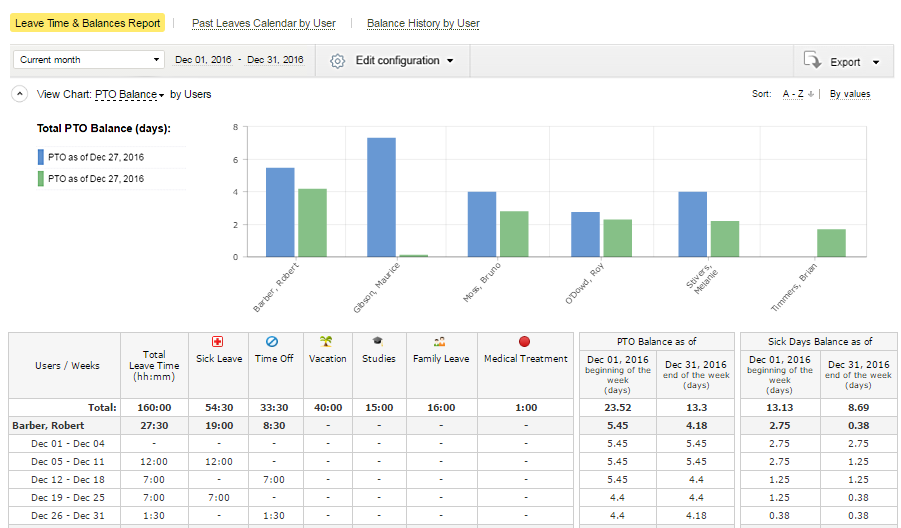Imagine having the flexibility to take that much-needed break after an intense project or offering your team the perk of extra time off instead of overtime pay. That’s compensatory time off in a nutshell.
Whether you’re an employer looking to boost workplace morale or an employee seeking a better work-life balance, this guide will walk you through the essentials of compensatory time off.
Let’s dive in and explore how you can make the most of this valuable resource!
What Is Compensatory Time Off?
Let’s suppose you’ve been pulling some serious overtime hours at work. Instead of getting paid extra cash for those hours, what if you could bank that time and use it later as paid leave? That’s essentially what compensatory time off (aka comp time) is all about.
All in all, it’s a clever way for employers to recognize their employees’ hard work and give them well-earned time off without directly dipping into payroll. It can be regarded as a form of workplace barter system – an employee trades their extra hours now for some needed relaxation later.
Compensatory Time Off vs. Overtime Pay
While comp time is paid time off (PTO) that you can bank and use later, overtime pay is the classic, “Thank you for working late, here’s some extra cash!” It’s immediate gratification in an employee’s paycheck, often at a rate of 1.5 times their usual pay.
So, which one is better?
Well, it depends on your priorities and your plans.
Let’s break it down:
Comp time benefits:
- Flexible scheduling: Comp time can be a game-changer for work-life balance. Need a mini-vacation without dipping into your holiday allowance? Compensatory time off has got you covered. Besides, it allows employers and team managers to involve employees in active overtime work during periods of high workloads without any sense of guilt. This is perfect for industries where workload intensity ebbs and flows depending on the season.
- Reduced burnout and staff turnover: Taking time off can be a fantastic way to recharge your batteries. Instead of a one-time paycheck boost, you get the gift of time to sleep in, hit the gym, or spend quality time with loved ones. For employers, less burnout also means a happier and more productive workforce, as well as fewer costs due to unplanned absences. Besides, employers who offer comp time often see higher employee satisfaction and retention rates. Happy employees = less turnover.
Comp time disadvantages:
- Risk of mismanagement: If not tracked properly, comp time can lead to disputes and confusion. It requires diligent bookkeeping.
- Delayed gratification: The rewards are not immediate. You have to wait to use that extra time, which might not suit everyone.
- May not be legal everywhere: Some jurisdictions have strict rules about compensatory time off, making it less accessible or completely off the table for some workers.
Overtime pay benefits:
- Immediate financial reward: Overtime pay provides a direct and immediate boost to your paycheck. For employees, it’s a simple and straightforward way to increase income without committing to a second job. Great for those saving for something big.
- Extra motivation to meet deadlines: Sometimes, deadlines are tight, and the only way to meet them is by putting in extra hours. Overtime pay can be the right incentive to get everyone on board with late nights or weekend work.
- Simplicity in payroll management: Calculating overtime pay is more straightforward than managing comp time. It simplifies payroll processes and ensures employees are adequately compensated within the correct pay period.
Overtime pay disadvantages:
- Increased costs: Paying employees 1.5x or even 2x adds up really quickly. Suddenly, that project you thought was going to cost $10,000 is inching closer to $15,000.
- Decreased productivity: Longer hours don’t always mean more work gets done. As the hours rack up, fatigue sets in, and the quality of work can take a nosedive. It’s like trying to run a marathon at a sprint pace – you’re bound to burn out.
- Employee dependence: If overtime pay becomes the norm rather than the exception, employees might start relying on those extra hours to meet financial goals. This can lead to increased expectations and potentially even dissatisfaction if overtime opportunities dry up.
- Tax implications for employees: Extra earnings could push you into a higher tax bracket, potentially reducing the net benefit.
- Health issues: People aren’t machines. Extended work hours aren’t just mentally exhausting – they can lead to serious health issues. Stress, burnout, and physical ailments can all creep in, potentially leading to more sick days and even long-term absences. So, while you’re paying more in overtime, you might also be losing out on productivity down the road.
- Compliance and legal risks: Navigating through labor laws and compliance requirements can be a minefield. Mistakes or oversights can lead to hefty fines, lawsuits, and a tarnished company reputation.
Comp Time Formula & Calculation Examples
Calculating compensatory time off is similar to calculating overtime pay. Here’s the basic formula:
The “multiplier” is usually 1.5 of the regular accrual rate, but it can vary depending on company policy or labor agreements.
Example 1: Sarah’s extra hours
Sarah worked 48 hours this week, 8 hours more than her standard 40-hour workweek. So how much comp time does she earn?
- Overtime hours: 48 – 40 = 8 hours
- Multiplier: 1.5
- Comp time earned: 8 hours × 1.5 = 12 hours
Sweet, Sarah now has 12 hours of comp time to use for an extended weekend or maybe a mid-week mini-vacation!
Example 2: Mark’s busy month
Mark went on a project spree and worked an additional 16 hours this month. Let’s see how much comp time he racks up:
- Overtime hours: 16 hours
- Multiplier: 1.5
- Comp time earned: 16 hours × 1.5 = 24 hours
Mark’s got a full three-day break locked and loaded, perfect for some much-needed R&R.
Compensatory Time Off: What Does the Law Say?
The Fair Labor Standards Act (FLSA) has some pretty specific rules about comp time, and it’s mainly reserved for public sector employees.
For private sector employees, comp time is generally a no-go – instead, employers usually have to pay overtime for those extra hours worked over the standard 40-hour workweek. In fact, if your employer is offering comp time instead of overtime pay, you might want to have a chat with your HR department because that’s a bit of a legal gray area.
For those in the public sector, comp time can be a lot more flexible. You might accumulate hours at a rate of 1.5 hours for each hour of overtime worked.
However, there are caps and limits. For example, non-exempt employees can generally bank up to 240 hours of comp time, but once you hit that cap, it’s back to good old overtime pay.
Compensatory Time Off for Hourly vs. Salaried Employees
Hourly employees, who are typically eligible for overtime, usually get comp time as a direct replacement for overtime hours worked. On the other hand, salaried employees, especially those in exempt positions under the FLSA, usually don’t get overtime pay.
Instead, comp time for salaried workers can come as part of the organizational PTO benefit program or be more flexible and loosely structured. All in all, it’s often at the discretion of the employer, and there’s more room for negotiation.
For example, if you stayed late to get that crucial presentation done, your manager might give you some flexibility to come in late the next morning or take an extended lunch break. It’s less formal but can certainly make those extra hours feel more worthwhile.
3 Tips on How to Manage Compensatory Time Off Effectively
1. Incorporate comp time rules into your PTO policy
Well-defined rules are key to effective PTO management. They let you keep employees in the know of how the accrual and tracking processes are run and organize everything in the most efficient way possible.
Here’s how to proceed:
- Assess your needs: First things first, you need to figure out why your organization needs a compensatory time off policy. Are your employees often working overtime? Would they prefer more time off instead of extra pay? Getting a clear picture here will set the stage for everything else.
- Define eligibility: Now identify who can earn comp time. Is it just for salaried employees, or can hourly workers earn it too? Be specific to avoid confusion later on.
- Set the earning rate: Generally, comp time is accrued at a rate of 1.5 hours for every hour of overtime worked, mirroring overtime pay. Clearly state this in your policy so everyone knows the deal.
- Cap the accruals: To avoid huge balances, set a maximum limit on the amount of comp time employees can accumulate. This prevents employees from banking an impractical number of hours that they may never use.
- Outline usage rules: Make it clear how and when employees can take their comp time. Do they need to get approval beforehand? Can they take it all at once or only in chunks? Clarity here is key!
- Documentation is essential: Make sure there’s a transparent and accessible way for employees to track their accrued and used comp time. Accurate records protect both the employer and the employee.
- Legal compliance: Last but definitely not least, ensure your comp time policy complies with all relevant labor laws. This might mean checking in with a lawyer or a dedicated HR professional.
2. Track overtime consistently
Overtime tracking keeps everything fair and square. When you meticulously track those extra hours, you’re making sure that no one’s efforts go unnoticed and everyone receives the time off they deserve.
It also nips any potential disputes in the bud because you’ve got clear, indisputable records. And let’s be real, nobody wants to wade through a sea of grumbles about uneven perks.
Here’s how to proceed:
When it comes to effortless and accurate overtime tracking, nothing beats actiTIME. This handy tool helps you automate the entire process, so you can focus on what really matters.

Let’s break down the standout features:
- Manual and automated overtime records: actiTIME offers the flexibility of both manual and automated overtime records. You can manually log overtime hours when needed or set up automated tracking to capture those extra working hours without lifting a finger.
- Overtime pay rates: You can set organization-wide and individual overtime pay rates based on your company’s policy. actiTIME will calculate everything without any input on your part, ensuring payroll accuracy and saving you countless hours of number crunching.
- Overtime reports: Data-driven decisions are the best decisions. With actiTIME, generating detailed overtime reports is a breeze. Get insights into how overtime impacts your budget, identify trends, and make informed adjustments. These reports are not just numbers – they tell the story of your team’s efforts and help you optimize resource management. Besides, they clearly show how many overtime hours you have to swap for comp time.

Check out actiTIME in action during a free 30-day trial – sign up here.
3. Automate time off accrual and tracking
Automation serves as your personal assistant that never messes up. It ensures accuracy, saves tons of time, and keeps everyone happy – both management and employees.
Instead of drowning in spreadsheets and risking errors, you can simply adopt an automated system that handles everything effortlessly. As a result, employees will know exactly how much comp time they’ve earned and used. Plus, you will comply with labor laws without a hitch – a big relief for anyone who doesn’t want a surprise audit to ruin their day.
Here’s how to proceed:
When it comes to managing time off, actiPLANS takes the cake by eliminating the usual headaches and replacing them with a seamless, efficient process.

Let’s dive into some of the standout features:
- Custom leave types and time off accrual rules let you tailor the system to fit your specific policies. Whether it’s PTO, sick leave, or any other kind of leave, you can set your own rules for accrual, making sure everything runs smoothly and fairly.
- Manual adjustments to time off balances come in handy in those cases when automated calculations need a human touch. actiPLANS allows managers to manually adjust employees’ balances, accommodating special circumstances or correcting any discrepancies.
- Employee self-service features let your team easily log in and make their own time off requests (even on the go). No more back-and-forth emails or paperwork – it’s all online and super straightforward.
- Automated time off approval functionality allows managers to set up rules for automatic approval or get notified to review requests promptly, ensuring quick and hassle-free processing.
- Time Off Balance History Report shows you how much leave someone has taken in the past year. Want to generate reports for better planning? actiPLANS offers a bunch of other handy reports, too – they are all there, detailed, and ready to use.

Get the taste of actiPLANS and its benefits during a free 30-day trial.
Conclusion
Compensatory time off is all about finding that sweet spot where productivity meets well-being. By offering comp time, employers can boost morale and retention while employees enjoy a better work-life balance.
So, don’t just stick to the old ways – embrace comp time and watch your workplace thrive. Remember, happy employees make for a successful business!



